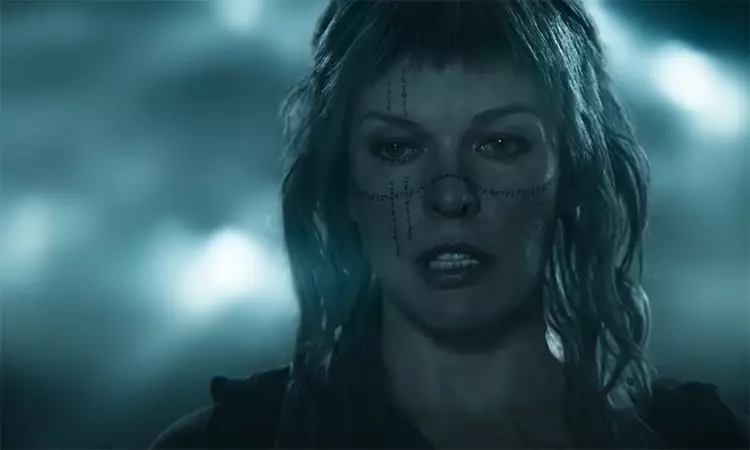“In the Lost Lands” attempts to carve out its niche in the landscape of genre cinema by blending elements of post-apocalyptic adventure, Western motifs, and werewolf mythology. This ambitious adaptation of a George R.R. Martin short story, with a screenplay crafted by Paul W.S. Anderson, promises an exciting fusion that, unfortunately, never truly crystallizes. The film has been in development for an impressive seven years, yet the final product suggests that time may have been spent more in the hall of ideas than in the execution.
It brings forth a premise that teeters on the brink of intrigue: a world ravaged by nuclear disaster juxtaposed with the mystical abilities of a wish-giving witch, Gray Alys, played by Milla Jovovich. Paired with her is Dave Bautista’s brooding gunslinger, Boyce, as they embark on a quest to commandeer the powers of a werewolf—a race against time that intertwines with an impending full moon. While on paper this reads like a unique concoction ready for exploration, the execution feels disjointed and a mere shadow of its potential.
Character Dynamics that Fall Flat
Central to a successful narrative is the chemistry among its characters. Unfortunately, the interactions between Jovovich and Bautista seem more like uncomfortable acquaintances than two people united by a daunting mission. The lack of palpable tension, whether romantic or antagonistic, transforms every scene into a monotonous chore rather than a compelling engagement. Both actors have shown their capabilities in other endeavors; Jovovich with her action prowess and Bautista with his growing emotional depth. Yet, “In the Lost Lands” constrains them within a script that rarely allows either talent to shine.
Supporting characters, such as The Enforcer, portrayed by Arly Jover, seem like half-hearted attempts to add layers to the narrative but end up functioning as placeholders, offering little more than aesthetic value. The film clumsily navigates its moral compass, touching on themes of sacrifice and greed typical in Westerns, yet fails to deliver any thought-provoking commentary or genuine character development.
Visuals vs. Substance
The aesthetic treatment of “In the Lost Lands,” characteristic of Anderson’s filmmaking style, leaves much to be desired. Described as visually reminiscent of a video game, the low-lit scenes and chaotic fight sequences—most notably a high-wire bus battle—strive for excitement but often lead to confusion and disillusionment. While explosive set pieces can electrify an audience, here they border on the absurd, lack creativity, and ultimately contribute to a feeling of fatigue rather than exhilaration.
The world-building that could have enriched the story—a hallmark of both Martin’s writing and successful films—is glaringly absent. Instead of evoking awe or deepening engagement, the environments appear haphazardly thrown together, lacking the mythical allure typically associated with fantasy narratives.
A Lost Potential
“In the Lost Lands” showcases the frailty of a film that has the bones of a captivating story but cannot rise above its hackneyed execution. While it attempts to hearken back to classic narratives rife with camaraderie and conflict, it does so without originality or flair. The disjointed script and the feeling of a poorly constructed universe reflect a film that perhaps needed more time in the conceptual phase rather than being thrust onto screens only to be met with a resounding thud. Now, viewers are left wondering what could have been if not for the emotional void and missed narrative potential.

